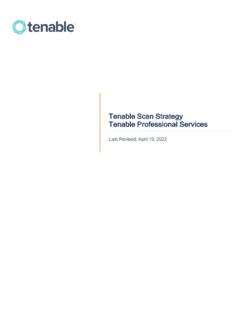Transcription of An Overview of the Soft Systems Methodology
1 system Thinking: Approaches and Methodologies Burge Hughes Walsh 2015 page 1 An Overview of the soft Systems Methodology Stuart Burge The soft Systems Methodology (SSM) was born out of research conducted at Lancaster University to apply Systems Engineering approaches to solve management/business problems . In other words they attempted to apply a Hard Systems approach to fix business problems. What they discovered was the approach often stumbled at the first step of problem definition. This happens quite simply because the different stakeholders have divergent views on what constitutes the system , the purpose of the system and therefore the problem.
2 Two key players in the development of the SSM are Peter Checkland [1999] and Brian Wilson [2001] who through action research were able to put together a practical and pragmatic approach to the identification and solution of soft ill-defined problems. This Methodology was more than just a process; Checkland and Wilson also developed a set of tools to help users carry out the steps. These include: Rich Picture Conceptual Model CATWOE Formal Systems Model More on these later because, at this point, I would like to focus on the approach.
3 Figure 1 presents a view of the SSM. Since its origin back in 1970 s and 80 s it has changed as various workers have added their bit. Figure 1 shows a 7-step process approach to SSM. I have chosen this view, that while it is an early representation, it does allow several key and important aspects of SSM to be made clear. Figure 1: The 7 Step soft Systems Methodology system Thinking: Approaches and Methodologies Burge Hughes Walsh 2015 page 2 Before launching into detail about the 7-steps it is worthwhile explaining the overall philosophy behind SSM.
4 It was born of the recognition that the real world is complex and messy primarily because we, human beings, inhabit it. Each of us will have a different perception of the same situation. That perception will be based upon concepts and beliefs we hold in our head a mental model(s) that we use to make judgments about reality. A simple example of this comes from Brian Wilson [2001] one of the originators of SSM. He asks us to imagine two people watching a TV programme. Both have watched exactly the same pictures and heard exactly the same sounds yet they reach completely different conclusions about whether it was a good or poor programme.
5 They express their conclusions and then have an argument as to who is right! Actually, both are right because each has used their own mental model that comprises concepts of what is good or not. If these concepts that form the mental models could be explicit rather than implicit, they could be used to compare against what was observed allowing each observer to defend their judgment. They may well disagree with the respective merits of their models, but the argument can now be carried out on a more rational and defendable basis.
6 It is the two words rational and defendable that are important and form the basis of the SSM. In simple terms SSM takes the messy arguments of the real world caused by people having different perceptions and creates defendable and rational models for comparison with what is happening in the real world to help made judgments or recommendations as to the response to the issue or problem. These rational and defendable models are called Conceptual Models are a based upon the use of defensible logic. I would like to emphasise here is that the Conceptual Models are not models of the real world that we experience but logical models of what it could be like.
7 SSM isn t really problem solving in the sense of analyzing the real world to find the root causes of issues. Central though to the building of the models is the use defensible logic that is deduced from a statement of purpose captured in a Root Definition of a relevant system . It is very important to note that these Conceptual Models are models of what logically needs to be done to achieve the purpose expressed in the Root Definition. Conceptual Models are a model of what good looks like that can be compared to reality in order to identify where change could be made.
8 Unfortunately, the language of SSM is not one of every day use. Returning now to figure 1, we can see that the lower have of the diagram is concerned with this abstract Systems thinking where step 3 is concerned with formulating the Root Definitions and step 4 is developing the Conceptual Models of what needs to be done. In formulating the SSM Checkland et al where interested in Systems that involve humans performing tasks and activities as opposed to the classic equipment or machine focused Systems Engineering world that they came.
9 To reinforce this they speak about the Conceptual Models as Human Activity system . The upper half of figure 1 is concerned with the real world, starting on the left hand side with attempting to establish what to thinks about. The right-hand side is concerned with what we are usefully going to be based upon the knowledge gain by comparing the logical Conceptual Models against the reality experienced. Let s go through these 7 steps in a bit more detail. system Thinking: Approaches and Methodologies Burge Hughes Walsh 2015 page 3 Step 1 Enter situation considered problematic: This step is concerned with the real world and the gathering of information and views about situations that are considered to be problematic and therefore there is some scope for improvement.
10 Typically, once it has been agreed that some change or review is needed, this step also involves some basic research into the situation to gather information on the key stakeholders and current performance and issues. Step 2 Express the problem situation: Recognising that the real world is messy, the second step in concerned with capturing the multiple views of the situation. To accomplish this Checkland et al developed the notion of a Rich Picture to capture the various perceptions. They understood that complex situations could not be adequately captured by words alone, diagrams and pictures are far more effective and can pack a higher density of information per cm2.





